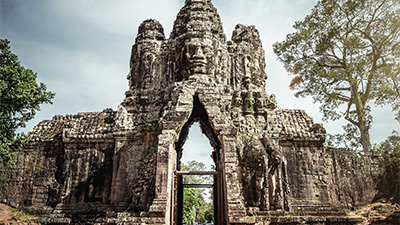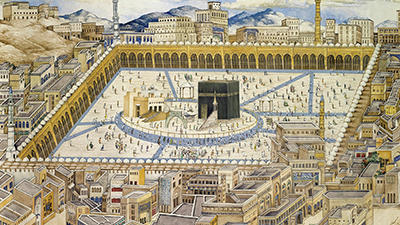Developments in South and Southeast Asia
Teacher Resources
Driving Question: How did belief systems affect South and Southeast Asian societies over time?
A variety of belief systems had a profound impact on societies in South and Southeast Asia. As these systems of beliefs spread across the region, they changed and shaped these societies in various ways. In this lesson you’ll learn about the beliefs that impacted South and Southeast Asian societies and how states in this area changed over time.
Learning Objectives:
- Explain how systems of belief and their practices affected South and Southeast Asian societies in the period from c. 1200 to c. 1450.
- Describe how and why South and Southeast Asian states developed and maintained power over time.
- Use close-reading strategies to examine the impact of belief systems on states in South and Southeast Asia.
Vocab Terms:
- Buddhism
- Christianity
- Confucianism
- Islam
- polytheistic
- scale
- state
Opener: Developments in South and Southeast Asia
To teach this lesson step, refer to page 2 of Lesson 1.3 Teaching Guide.
In need of a few good maps? Check out our map collection to help bring historical narratives to life.
Geography plays a large role in where and how human communities develop. How do you think geography influenced the development of states in South and Southeast Asia?
South and Southeast Asia 1200–1450
To teach this lesson step, refer to page 3 of Lesson 1.3 Teaching Guide.
Check out our Reading Guide to learn about the Three Close Read approach.
Imagine how hard it is to get your friend group to agree to one thing. Now imagine huge regions agreeing on, well, anything! What is the glue that can hold large geographic regions together?
-
Guiding Questions
-
Before you read
Preview the questions below, and then skim the article. Be sure to look at the section headings and any images.
While you read
Look for answers to these questions:
- Did the Mongols ever conquer Southeast Asia? What about South Asia? Why or why not?
- Why is 900 to 1400 called the period of “classical states” in Southeast Asia?
- What foreign culture first inspired the Khmer rulers of Angkor?
- What was the importance of Buddhist monasteries in the societies of South and Southeast Asia?
- What is purdah, and how did it differ in different social groups and different regions?
After you read
Respond to the following questions:
- To what extent does this article explain how the various belief systems and practices of South and Southeast Asia affected their societies over time?
- In South and Southeast Asia, Hinduism, Buddhism, and Islam played an important role in shaping religious, social, and political institutions between 1200 and 1450. Compare and contrast the different ways in which these religions influenced the organization of societies and politics of the diverse regions examined here?
State and Religion in Afro-Eurasia
To teach this lesson step, refer to page 4 of Lesson 1.3 Teaching Guide.
This blog post, “Doing More With Three-Step Reading”, provides strategies for supporting student comprehension.
Government and religion can work hand in glove if one is in a theocracy; but what is that relationship like with a secular government?
-
Guiding Questions
-
Before you read
Preview the questions below, and then skim the article. Be sure to look at the section headings and any images.
While you read
Look for answers to these questions:
- How does the author describe states and religion in the Islamic world?
- How were Buddhism and Hinduism different?
- Why did Buddhism and Daoism often prove troublesome for the Chinese state? What did the Song Dynasty promote instead and why?
- What were some ways that rulers and religious leaders cooperated and clashed in Christian Europe?
- The Mongol Empire conquered people of many different religions across Eurasia. How did the Mongol state treat these conquered peoples?
After you read
Respond to the following questions:
- How did belief systems impact society and the state from c. 1200 to 1450?
- It’s been a while since the fifteenth century, but religions still play a major role in our world today. Sometimes they’re intimately involved in government, sometimes they are kept more separate from it. Can you think of any ways that the history in this article might have influenced the ways we think of religion in the twenty-first century?
Thematic Connections
How were states in Asia similar from c. 1200 to 1450 CE? The AP® themes can help you answer this question.
Closer: Developments in South and Southeast Asia
To teach this lesson step, refer to page 5 of Lesson 1.3 Teaching Guide.
It’s your turn to be the teacher! How would you quiz one of your classmates on this lesson?






